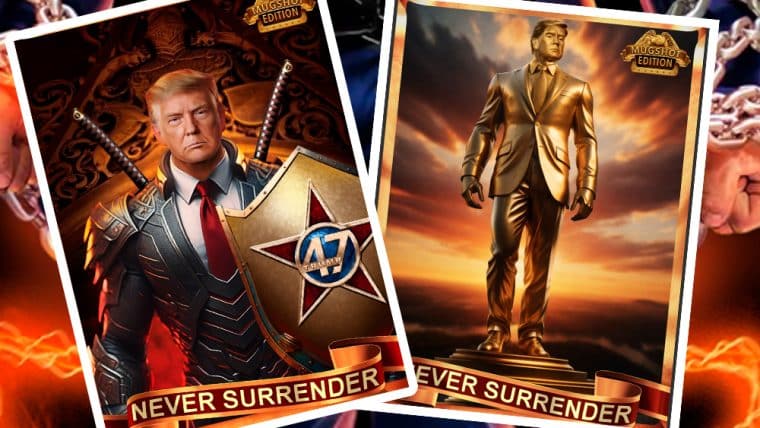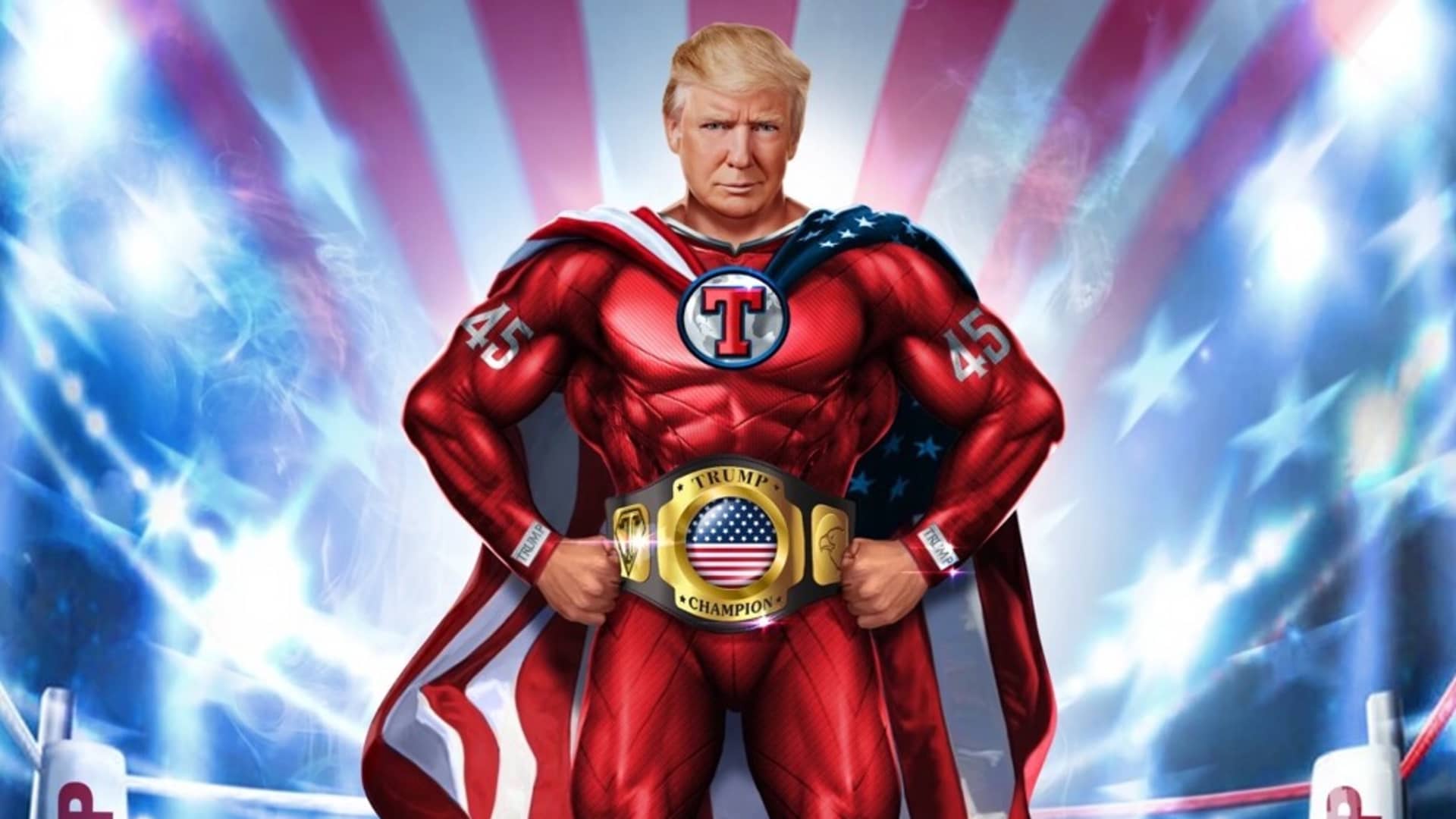Donald Trump may be the most crypto-friendly US president ever, not because he passed supportive laws or executive orders but because he has made millions selling NFTs of himself. Strangely enough, he is launching yet another collection of NFTs, this time on the Bitcoin blockchain as Ordinals.
Trump’s latest collection, known as the “mugshot edition,” features digital trading cards with hilarious, lazy art of him in various grand poses and costumes. These include depictions of Trump as a WWE wrestler, a basketball player, and even an astronaut.

Priced at $99 each, these NFTs depict various amusing poses and situations of Trump, including him as a wrestling champion, holding a basketball, and even in space.
https://Twitter.com/CollectTrump/status/1748054959843622941?s=20
Collectors willing to invest in 100 of these Donald Trump NFTs will also receive a unique digital card, termed an “ordinal,” on the Bitcoin blockchain.
However, these ordinals, along with the 100 NFTs required to obtain them, come with unusual strings attached. They cannot be traded by their owners until December 2024. This restriction, likely aimed at limiting their use as investment vehicles, paradoxically detracts from their appeal as NFTs.
The Financial Mechanics Behind Trump’s NFT Venture
Trump’s foray into silly NFTs has been incredibly lucrative, generating tens of millions of dollars through direct sales and secondary market royalties.
His first series of digital trading cards, launched in December 2022, was a massive hit with NFT traders, selling out all 40,000 NFTs within 24 hours. It has seen various ups and downs since its release but it has over $26 million in trading volume on OpenSea and you can’t buy one for less than about $690 at the time of writing.
A second series, released in August last year, featured 47,000 tokens at $99 each, selling out immediately upon release.
Revenue from these collections flows to Trump’s account through a licensing deal with Trump-owned CIC Digital.
Despite the substantial financial gains, the projects have been shrouded in speculation regarding ownership and operational aspects.
Official statements from the Trump Trading Cards website clarify that while CIC Digital LLC allows the use of Trump’s likeness under a licensing agreement, the funds raised from the NFT sales are not intended for Trump’s presidential campaign.
Because he didn’t create and launch the project himself and used a licensing agreement, it’s impossible to tell how much of the profits he took home but it was likely more than substantial.
Why Choose Bitcoin Ordinals?
The unconventional trading limitations tied to Trump’s new collection of Bitcoin Ordinals NFTs have raised eyebrows in the cryptocurrency community, restriction on trading until December 2024 has left enthusiasts puzzled, as it deviates from the typical freedom and liquidity associated with NFTs.
Additionally, the high cost of acquiring these ordinals – nearly $10,000 for 100 digital trading cards – places them out of reach for many potential collectors.
Inscribing NFT data on the Bitcoin blockchain, a feature touted for its expected longevity, comes with its own set of challenges.
Due to Bitcoin’s design not being optimized for data-heavy NFT transactions, the process of minting and transferring Ordinals is considerably more expensive compared to other formats like ERC-1155 tokens on Polygon.
The Bottom Line: A New Narrative in Digital Collectibles
Donald Trump’s NFT adventures are reshaping the narrative around digital collectibles and may spawn an entirely new use-case for cryptocurrencies: politics. While his collections technically don’t support his campaign directly, the profits he earns from them allow him to spend his other money on his campaign.
Trump has already shown the power of grass roots fundraising in the 2016 and 2020 elections, raising more small donations than any GOP candidate in the history of the US. If politicians find a way to harness the power of cryptocurrencies without breaking the law like Trump’s NFTs but on a larger scale, they may be able to gain a massive monetary edge over their competition. This could be a silly NFT collection or it turns out to be the beginning of a new era of campaign finance.
